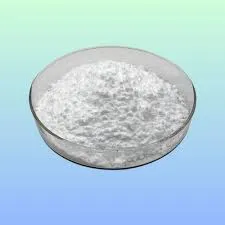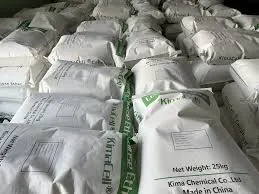
Jun . 04, 2025 18:57 Back to list
What Does HPMC Stand For? Premium Hydroxypropyl Methylcellulose
- Understanding HPMC Terminology and Chemical Structure
- Technical Superiority of Hydroxypropyl Methylcellulose
- Market Impact: Usage Statistics Across Industries
- Performance Comparison of Leading HPMC Manufacturers
- Customized Solutions for Specific Application Needs
- Practical Applications in Construction and Pharmaceuticals
- Advancements in Cellulose Ether HPMC Technology

(what does hpmc stand for)
What Does HPMC Stand For: An Essential Industrial Compound
Hydroxypropyl Methylcellulose, abbreviated as HPMC, represents a critical cellulose ether derivative extensively employed across manufacturing sectors. This semi-synthetic polymer originates from natural cellulose through alkalization and etherification processes, yielding a compound with hydroxyl groups partially substituted by methoxy and hydroxypropyl units. Pharmaceutical industries recognize it as hypromellose, while construction sectors typically reference it as cellulose ether HPMČ. Its molecular structure grants unique amphiphilic properties - hydrophilic enough for water solubility yet hydrophobic enough to form effective surface films. Global consumption reached 650,000 metric tons in 2023, driven primarily by Asian manufacturing hubs where over 60% of production occurs.
Technical Superiority of Hydroxypropyl Methylcellulose
HPMC delivers unparalleled functionality through four core attributes:
- Thermoreversible Gelation: Forms gels at 50-90°C that liquefy upon cooling, enabling controlled release in pharmaceuticals
- Pseudoplastic Behavior: Thins under shear stress (viscosity drops 80% at 100s⁻¹), facilitating application while maintaining stability at rest
- Optimal Water Retention: Retains 85-98% moisture in cement mortars during 48-hour cure cycles
- pH Tolerance: Maintains stability across 3-11 pH environments
The degree of substitution (DS) and methoxy/hydroxypropyl ratios determine performance characteristics. A DS of 1.8-2.0 with 19-30% methoxy groups creates optimal film formation, while hydroxypropyl content below 10% enhances thermal gelation points. These variables allow engineers to specify precise attributes including gelation temperature, solubility thresholds, and adhesion strength for application-specific formulations.
Market Impact: Usage Statistics Across Industries
Construction consumes approximately 220,000 tons of HPMC annually, primarily in tile adhesives where it improves workability and extends open time by 40-60%. Pharmaceutical applications account for 145,000 tons yearly, mainly for controlled-release tablets and ophthalmic solutions. Emerging sectors demonstrate significant growth patterns:
- Personal care products: 17.8% CAGR (2023-2028)
- Food additives: 12.3% CAGR, particularly in plant-based meat alternatives
- Ceramic production: Enhances green strength by 35% in dry-pressed applications
Regional consumption data indicates Asia-Pacific dominates with 58% market share, followed by Europe (22%) and North America (15%). Construction booms in Southeast Asia are driving particularly strong demand for แผ่น HPMC grades with high water retention for tropical climate applications.
Performance Comparison of Leading HPMC Manufacturers
| Manufacturer | Viscosity Range (mPa·s) | Gel Temp (°C) | Moisture Retention (%) | Ash Content | Key Applications |
|---|---|---|---|---|---|
| Shin-Etsu | 5-200,000 | 58-90 | ≥92% | ≤1.2% | Pharma film coating |
| Dow Chemical | 40-100,000 | 50-85 | ≥95% | ≤2.5% | Tile adhesives |
| SE Tylose | 15-150,000 | 65-85 | ≥90% | ≤1.5% | Exterior insulation |
| LOTTE Fine Chem | 10-80,000 | 55-75 | ≥94% | ≤2.0% | Dry-mix mortars |
Shin-Etsu dominates pharmaceutical grades with USP-NF compliance, while Dow's construction-grade HPMC offers superior water retention. Ash content below 1.5% indicates pharmaceutical suitability, whereas construction applications tolerate levels up to 5%. Southeast Asian manufacturers specialize in high-viscosity แผ่น HPMC sheets for putty applications at competitive price points.
Customized Solutions for Specific Application Needs
Manufacturers offer specialized HPMC formulations engineered for performance in precise environments. For high-temperature construction, modified cellulose ether HPMC maintains viscosity above 45°C through increased hydroxypropyl content. Pharmaceutical applications employ low-substituted HPMC grades that delay gelation until intestinal pH conditions. Specific modifications include:
- Quick-dissolving: Particle size optimized at 50-80μm with increased methoxyl substitution
- Retardation additives: Combined with starch ethers to extend open time to 45 minutes
- Hydrophobic modification: Added silicone compounds to repel water in exterior finishes
Formulation engineers adjust substitution patterns to achieve targeted gel points between 50-90°C. Modified versions deliver slump retention exceeding 3 hours in self-leveling underlayments and accelerate dissolution rates by 40% in effervescent tablets compared to standard grades.
Practical Applications in Construction and Pharmaceuticals
In Thailand's construction sector, แผ่น HPMC enhances tile adhesive formulations to withstand humidity exceeding 85% RH. Major adhesive producers have documented 30% reduction in material consumption when using optimized cellulose ether HPMC in thin-bed mortars. Pharmaceutical applications demonstrate similar precision:
- Sustained-release matrix tablets maintain API delivery over 12-24 hours
- Ophthalmic solutions utilize low-viscosity HPMC (5-50mPa·s) as lubricant
- Topical gels leverage 2% HPMC concentrations for mucoadhesive properties
Cement renders incorporating HPMC exhibit 28-day compressive strength improvements of 18-22% and reduced shrinkage cracking. Japanese manufacturers developed specialized HPMC that increases render adhesion to EPS insulation boards by 90% while maintaining vapor permeability above 0.10g/(m·h·Pa).
Future Directions in Cellulose Ether HPMC Technology
What does HPMC stand for in tomorrow's industrial landscape? Innovation focuses on hybrid systems incorporating synthetic polymers with cellulose ether HPMC. Researchers are developing grades with dual-substitution patterns enabling concurrent thermal and pH responsiveness. Emerging technologies include:
- Enzyme-modified HPMC with precise molecular weight distributions
- Nanocellulose-reinforced composites with 200% tensile improvement
- Electroconductive versions for 3D-printed medical devices
Manufacturers have patented production methods reducing water consumption by 40% and cut energy usage below 0.8 MWh per ton. As industries increasingly seek sustainable materials, what does HPMC stand for becomes increasingly synonymous with biopolymer innovation. Trials indicate next-generation cellulose ether HPMC could capture 35% of the synthetic thickener market by 2028, particularly in waterborne coatings currently dominated by petroleum derivatives.

(what does hpmc stand for)
FAQS on what does hpmc stand for
以下是根据核心关键词及其相关词创建的5组英文FAQ问答,使用HTML富文本格式:Q: What does HPMC stand for?
A: HPMC stands for Hydroxypropyl Methylcellulose. It's a non-ionic cellulose ether derived from plant fibers. This compound is widely used as a thickener, binder, and film-former.
Q: What are HPMC sheets used for?
A: HPMC sheets serve as dissolvable films for pharmaceutical capsules and coatings. They provide controlled drug release in medications. These films also act as protective barriers in construction materials.
Q: What is cellulose ether HPMC in construction?
A: Cellulose ether HPMC is a key additive in cement-based products like tile adhesives and renders. It improves water retention, workability, and adhesion strength. This additive also reduces cracking in drying compounds.
Q: How does HPMC function as a pharmaceutical excipient?
A: As a pharmaceutical excipient, HPMC controls drug release rates in tablets and capsules. It provides viscosity to ophthalmic solutions and acts as a binder in pill formulations. Its safety profile makes it suitable for oral medications.
Q: Why is HPMC preferred in food and cosmetics?
A: HPMC is favored as a vegan alternative to gelatin in food/cosmetics. It creates stable emulsions in lotions and acts as a fat replacer in low-calorie foods. Its non-toxic nature meets strict safety regulations.
-
Versatile Hpmc Uses in Different Industries
NewsJun.19,2025
-
Redispersible Powder's Role in Enhancing Durability of Construction Products
NewsJun.19,2025
-
Hydroxyethyl Cellulose Applications Driving Green Industrial Processes
NewsJun.19,2025
-
Exploring Different Redispersible Polymer Powder
NewsJun.19,2025
-
Choosing the Right Mortar Bonding Agent
NewsJun.19,2025
-
Applications and Significance of China Hpmc in Modern Industries
NewsJun.19,2025







